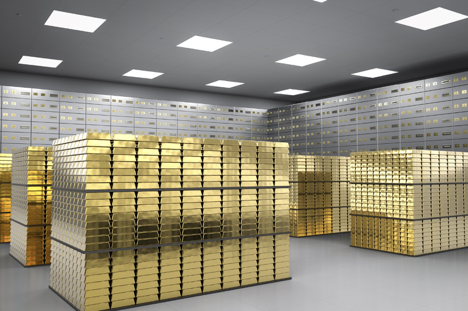Factors that Affect Gold Prices and Calculations

Fiat currencies in countries come and go, but gold has remained valuable for centuries. Many cultures cherish the beauty and glimmer that this precious yellow metal brings, and it's also relevant in many industries. In society, gold is a symbol of wealth and investors today consider including precious metals in their portfolio for more diversification. You can know more about portfolio diversification when you visit this page.
Since the price of gold is not affected by the downward spiral of stocks and bonds, investors consider this a protection against inflation and a hedge if a currency devaluation happens. It's established that gold remained a popular investment through the years, but many are not aware of the factors that affect its daily rates.
How the Prices are Determined
The first gold rush happened in 1697, and trades brought this precious metal to countries like Brazil and the UK. Nowadays, London manages most of the delivery of goods, and its markets are widely accepted across the world.
Many companies in London have set the prices through a telephone process known as the London Gold Fix. The ICE Benchmark Administration or IBA took over this process in 2015 by utilizing an electronic auction system. The IBA consists of several banks, panels of chair members, and an oversight committee.
Twice a day, at about 10:30 in the morning and 3:00 in the afternoon, there's a published price of gold in the currency of US dollars, and this serves as the benchmark for many consumers, producers, miners, investors, and the central banks to set their prices. The rates are adjusted in real-time based on anonymous auctions and financial evaluations. All the transactions in buying and selling should be within the limit of 20,000 troy ounces, which will determine the fixed cost.
Factors that Affect the Current Rates
1. Futures Price
There are gold futures prices that are based on the LBMA's current pricing of the precious metal. The futures are primarily contracts created for a delivery date of gold on a particular date down the road. Various factors will determine the prices in the contract, including the estimated costs of transporting goods, prediction on the supply and demand, risk-free rates of returns to the holders, and the storage of the physical bullion.
Since most of the bullion is not delivered upon request, all the trading involved is done electronically. Know that these are very high risks because not all people can predict supply and demand factors. Read more information about gold as an investment on this site: https://en.wikipedia.org/wiki/Gold_as_an_investment.
2. Spot Prices
The rate of the bullion that needs immediate delivery is known as its spot price. This is often the average net value of the futures contracts due to the nearest month and all the gold currently in market circulation today. When the market is stable enough, the future prices are higher than the spot price. But if there's an increase in demand for the physical coins and bullion, it's possible for the current pricing to go higher.
Other Factors that May Influence the Rates

1. The Consumers' Demand and the Supply from Companies
The principle of supply and demand applies to gold, which is a significant factor in the prices. When the supply is not enough but the demand is higher, expect that everything will rise. If it's the other way around, except that the costs will decrease.
It's worth noting that the supply is finite, and it will be limited. According to some analysts' forecasts, the world reached the supply's peak years ago, and there's a continuous decline in the production level. The demand from central banks, countries, medical sectors, investors, and technology companies remain strong.
2. Conditions of the Market
Most of the market conditions are affected by economic or even political events. You might be wondering how much your investment is worth today, and fortunately, a calculator can help you determine them. Even if you're in the middle of an election, pandemic, or great recession, you can expect that the rates will reflect the economy's current health.
At some point in 2011, gold's value soared significantly. It reached a record high of more than $1900 per ounce. Political turmoil in Europe and economic hardships had also fueled the growth of gold in today's times. Even the pandemic has a role in the market, and investors are now looking for safe havens to park some of their assets.
3. Depreciation of Currencies
Currency depreciation can happen when a specific country's fiat money loses its value in one of the leading foreign currencies in the global market. Monetary policies like quantitative easing and inflation can decrease the purchasing power of money.
For example, between a decade in the year 2005 to 2015, the dollar's purchasing power has been known to decrease by about 20%. At this time, the purchase prices of precious metals have soared by over 160%. The trends cab changed, but the metals' value remained in place. When a country's currency value suddenly decreases, many investors will look for other safer avenues like gold to fall back on. This will increase the prices and demand in the short term.
You can choose to invest in bullion where they can come in the form of bars and coins that have at least 99.5% purity. Other options involve numismatic coins and ETFs. Regardless of the form of investments you're choosing, it's essential to do research and calculate the prices first before going all in.
